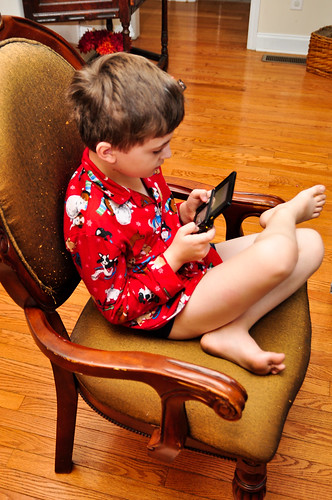Photo-Tech Update

I was recently “forced” into an upgrade of my iPhone to the new 4S model (by forced, I mean I was eligible for upgrade pricing and the home button on my 4 wasn’t working, so I bought a new one). I have to say that I’m floored by the quality of the new iPhone camera. Combined with the amazing photo editing software available on iOS such as Snapseed, you can make truly stunning photos. I’m not saying anything new here, but the newer cell phone cameras have enough resolution where editing photos is far less destructive (at least it’s less noticeable). Photos such as the one above are now at a resolution suitable for printing at a decent size! The dynamic range seems more realistic, and the image stabilization helps combat Mr. Blurrycam (this is especially effective for taking video). I’m very excited about it.

TechCrunch brought this service to my attention. CameraTrace claims to be able to find your lost camera based on an embedded serial number in your EXIF data. The concept is very interesting, but it seems to me the type of person who is stealing photo equipment will not be uploading pictures to Flickr. It’s more likely that the camera will be sold on Craigslist or in a WalMart parking lot to an unassuming poor photographer who will be the one who gets caught with the stolen goods (I know, because I recovered my stolen camera in a WalMart parking lot from a guy who was reselling my D40 on Craigslist that he obtained in a WalMart parking lot). Still, you might get your camera back! The issue I have is that sites like Flickr and 500px are not nearly as popular as Facebook has become for the average person sharing their photos. If they can find a way to search against Facebook photos, then I’d fully support this service. $10 is a pretty small amount to register your camera though, and it will give you an edge in case you do ever fall victim to camera theft.

The last thing I wanted to talk about is the Nintendo 3DS and its 3D camera. As far as I know, this is the first widely distributed 3D camera in the world. It’s unfortunate that Nintendo was cheap in the actual camera quality, because the potential is far greater than the reality. Regardless, a 3D still camera is an amazing tool. As photographers, we’ve been forever battling to interpret 3D reality in only two dimensions on film, paper, and/or digital screens. We struggle to find compositional tools to define depth, but with an actual 3D camera, you can see the depth. The cool thing is that it challenges you to exploit that depth, which actually carries over into a 2D conversion of the same photos. By trying to make a better 3D photo, you are actually making a better 2D one as well. I know that sounds crazy, but it makes sense when you really think about it. By trying to isolate and draw the eye to your subject, you instinctively use the techniques that photographers have been practicing for years. From using the rule of thirds to moving closer to finding leading lines, those techniques become second nature when composing in 3D because you are seeing the actual depth! I think the Nintendo 3DS could be a great training tool for teaching composition.